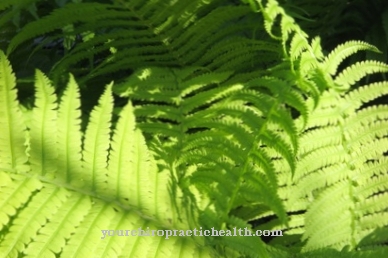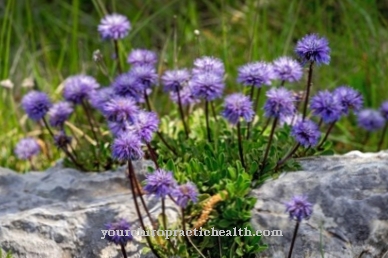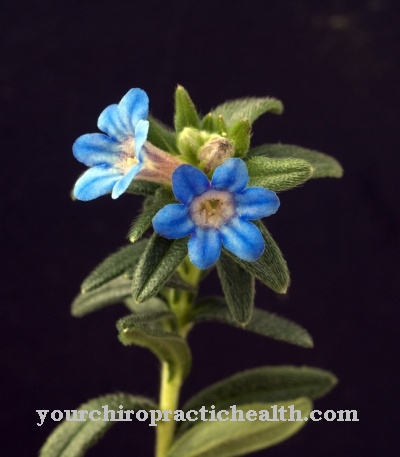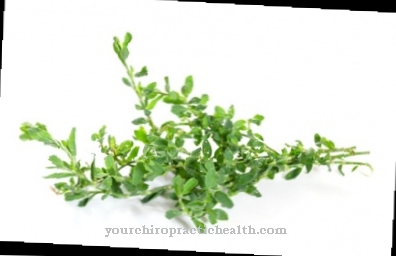Of the pumpkin, as one of the largest single fruits in the plant kingdom, belongs botanically to the group of berries and to the family of the so-called Cucurbitaceae. Nevertheless, in our latitudes the pumpkin is mostly used as a vegetable or as a decorative ornament in late summer or autumn.
Occurrence & types of pumpkin

Pumpkins vary extensively in their color, shape and size. In addition, there are a number of very different species, including those that, from botany, fall under the so-called Lagenaria species.
The main types of these impressive fruits in general include the garden pumpkin, the giant pumpkin, the musk pumpkin and the fig-leaf pumpkin. Nowadays, many pumpkins are subject to countless hybrids, so a division into edible and ornamental pumpkins is easiest. In addition, summer and winter pumpkins can be differentiated by the thickness of the shell.
Zucchini are among the summer squashes with thin skin. The home of the pumpkins is Central and South America. He came to Europe via North America. It has a history stretching back thousands of years. It is believed to be one of the oldest food and cultivated plants in America.
The so-called - visually striking - bottle gourds, which belong to the botanical group of Lagenaria, have their origin in Africa.
Application & use
Especially in the last two decades in Germany Pumpkins regained greater importance. On the one hand as a vegetable, on the other hand as a decoration in the autumn months.
But the healing effects of the pulp and pumpkin seeds are also increasingly valued in naturopathy and self-medication. The pumpkin owes its processing into dishes in the classic vegetable sense primarily to the alternative and natural food scene. Here, especially from the 1990s onwards, many traditional types of vegetables and fruit were rediscovered for the saucepan.
The autumn pumpkin has of course been part of the menu in recent years. Whether the pulp of the pumpkin as pumpkin soup, pumpkin curry, pumpkin puree, pumpkin casserole, pumpkin gratin, for filling pasta, sweet and sour as a salad or to refine cilli, the pumpkin can be used almost universally. He has now also conquered the baked goods in the form of pumpkin bread or pumpkin pie. Baked sweet, it is a welcome dessert.
Almost all of the pumpkins have a slightly fibrous, yellowish-orange pulp. The pulp of the pumpkin has a slightly sweet taste. His pumpkin seeds are also roasted as a snack, toppings for salads, in muesli or baked in rolls and breads make a delicious change. Pumpkin seeds are also processed into high-quality pumpkin seed oil.
Significance for health, treatment & prevention
The pumpkin pulp is extremely gentle on the stomach and low in calories. It is rich in secondary plant substances and fiber and contains a lot of water.
This promotes digestion and toxins can be excreted more quickly. Healing effects are known for obesity, constipation, rheumatism, gout, elevated blood lipid levels, complaints of the pancreas, weak kidneys and heart problems. In addition, the immune system and nerves are strengthened by eating pumpkin pulp.
The pumpkins owe their color to the carotene. Some pumpkins even contain twelve times the amount of carotene than carrots, which are already extremely high in carotene, and thus ensure an extremely good supply of vitamin A. The pumpkin pulp can also be processed as a vegetable drink rich in vitamins and minerals.
The pumpkin seeds contain valuable polyunsaturated fatty acids, lots of vitamin E and various minerals. They help in the digestive system, in the excretory organs, with bladder weakness and above all - as one of the really few medicinal plants - with prostate problems. They have a diuretic effect in the body.
The ingredients of the kernels, especially linoleic acid, have a direct positive effect on the bladder muscles and strengthen them. Pumpkin seeds can also provide a quick remedy for worms. The kernels are generally said to delay human aging processes.
The cold-pressed pumpkin seed oil is characterized above all by a high proportion of the extremely healthy, polyunsaturated fatty acids. It is also rich in selenium and contains the fat-soluble vitamins A and E as well as vitamins B1, B2 and B6. Pumpkin seed oil is therefore not only tasty, but also extremely healthy.
























.jpg)



